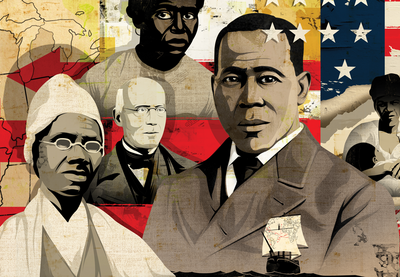Students will know that many people worked individually and in groups to end slavery.
What Else Should My Students Know?
9.A Once they escaped, many people who had been enslaved worked to change the laws that allowed slavery.
9.B Not every white person agreed with slavery. Some joined groups that tried to convince people in power to end slavery.
9.C Although it was difficult, slavery eventually became illegal. However, even though slavery became illegal, labor exploitation and the oppression of black and Indigenous people have never gone away.
How Can I Teach This?
- Some of the leading voices for the abolition of slavery were the formerly enslaved. Students should learn about people like Frederick Douglass and Sojourner Truth to appreciate their heroism and activism. The story of Mum Bett and the end of slavery in Massachusetts, told through the book Mumbet’s Declaration of Independence, can give students a case study.
- Students should begin to understand the layers of government (local, state, tribal and national) and the idea that rules can change from place to place and gradually over time. To approach the idea that there are different rules in different places, start by encouraging students to discuss the different rules they follow in different contexts‚ for example, the difference between what is acceptable in inside play and outside play.
- Learning about the abolition movement gives students a chance to consider what it means to recognize and stand up against injustice. Drawing from Learning for Justice’s Social Justice Standards, teachers can create some compelling questions to push this conversation forward, encouraging discussion of circumstances that students and their families face. Students should study examples and role models from the past and present, and ask themselves: “How can I make a difference?” Connecting to initial discussions about the nature of freedom, they should also discuss what it means for some people to have the choice to act while others do not.

